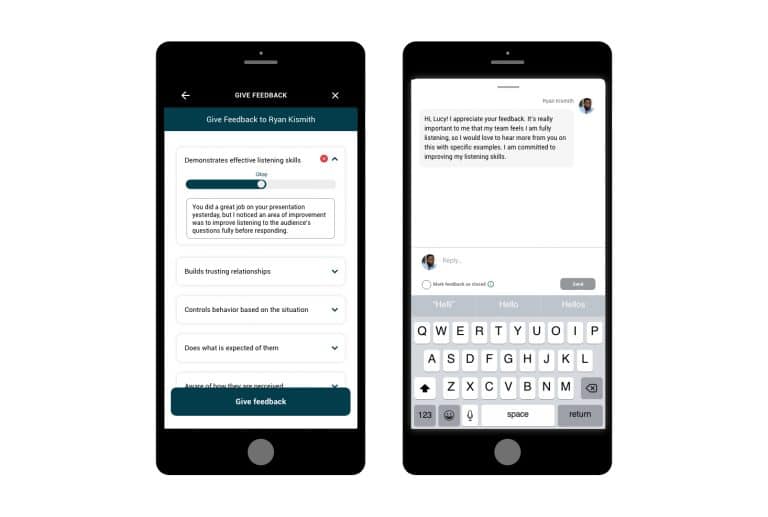For decades, organizations have relied on the annual performance review as staple of employee development strategy. However, research shows that traditional performance reviews fall short. They often reflect bias and fail to encourage employee improvement. As a result, many organizations are leaving the annual performance review behind. Instead, they use real-time feedback technology to provide managers and employees with an “always-on” opportunity to provide input on performance and organizational systems.
In paper published in Information Systems Research, Thinaer’s Michael Rivera, EVP of Analytics and Innovation, and Tony Petrucci, Chief Strategy Officer, discuss this shift. In this paper, they highlight four ways that real-time feedback technology mitigates bias and supports ongoing performance improvement:
Reduces gender bias in performance feedback.
Research shows that traditional performance reviews reveal reviewer bias. By contrast, real-time feedback demonstrates lower instances of implicit bias. Sentiment analysis of real-time feedback shows lower rates of gender bias in feedback. For instance, when reviewers are prompted to give feedback on a specific event or interaction, feedback tends to be specific and direct. In a performance reviews, reviewers recollect 6 – 12 months of experience to construct feedback. This often introduces bias into the process.
Paints a clearer picture of an employee’s job performance.
Unlike traditional reviews, real-time feedback is not affected by previous perceptions and feedback. Consequently, historical scores do not impact ratings that employees receive in the present or future. This also helps to mitigate review bias, as reviewers are less influenced by scores the provided in the past.
Supports ongoing performance improvement.
Real-time feedback technology helps employee development. When employees receive low real-time feedback scores to start, they significantly improve over time. This suggests that real-time feedback de-stigmatizes workplace criticism and motivates employees to perform well.
Timely positive feedback drives future positive results.
When employees receive positive input for good work, they are encouraged to repeat it again. Timely feedback helps employees understand the impact that their work has on the broader organizational goals.
In conclusion, real-time feedback technology helps leaders provide actionable, unbiased feedback to employees. It also helps employees provide actionable feedback to one another and to the organization. This approach mitigates bias and elicits long-term employee performance improvement.
Next Steps
Learn more about giving actionable feedback to colleagues and employees.
To read the full academic paper, visit Information Systems Research and download “Are Performance Reviews Outdated? An Empirical Analysis on Continuous, Real-time Feedback in the Workplace.”


